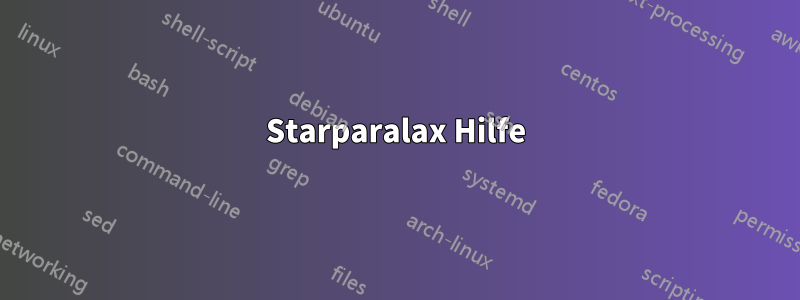
Ich bin ziemlich neu bei Latex und habe gerade erst von tikZ erfahren. Ich bin kaum in der Lage, ein Dreieck und einen Winkel zu machen. Ich wollte nur fragen, ob Sie mir sagen können, wie ich mit dem folgenden Projekt beginnen kann:
Die Einleitung:
\usepackage{appendixnumberbeamer}
\usepackage{booktabs}
\usepackage[scale=2]{ccicons}
\usepackage{pgfplots}
\usepgfplotslibrary{dateplot}
\usepackage{tikz}
\usetikzlibrary{arrows.meta,bending,decorations.markings,intersections,angles,quotes,babe l,lindenmayersystems,plotmarks}
\pgfdeclarelindenmayersystem{A}{%
\symbol{F}{\pgflsystemstep=0.6\pgflsystemstep\pgflsystemdrawforward}
\rule{A->F[+A][-A]}
}
\tikzset{
arc arrow/.style args={%
to pos 1 with length 2}{
decoration={
markings,
mark=at position 0 with {\pgfextra{%
\pgfmathsetmacro{\tmpArrowTime}{2/(\pgfdecoratedpathlength)}
\xdef\tmpArrowTime{\tmpArrowTime}}},
mark=at position {1-\tmpArrowTime} with {\coordinate(@1);},
mark=at position {1-2*\tmpArrowTime/3} with {\coordinate(@2);},
mark=at position {1-\tmpArrowTime/3} with {\coordinate(@3);},
mark=at position {1} with {\coordinate(@4);
\draw[-{Stealth[length=2,bend]}]
(@1) .. controls (@2) and (@3) .. (@4);},
},
postaction=decorate,
},bent arrow/.style={arc arrow=to pos #1 with length 2mm},
pics/strange bar/.style={code={\draw[thick] (-#1,0) -- (#1,0);}}
}
\usepackage{xspace}
\newcommand{\themename}{\textbf{\textsc{metropolis}}\xspace}
\usepackage{amsmath}
\usepackage{amssymb}
\usepackage[ngerman]{babel}
\usepackage[utf8]{inputenc}
\usepackage[T1]{fontenc}
\usepackage{animate}
\usepackage{selinput}
\SelectInputMappings{adieresis={ä}, germandbls={ß}}
Der Rahmen:
\begin{frame}[fragile]
\hspace{2cm}
\begin{tikzpicture}[font=\sffamily]
\draw[name path=A] (0,5) coordinate(TL) -- (0,0);
\draw[bent arrow/.list={0.125,0.625}] (0,0) circle[x radius=2cm,y radius=0.5cm];
\draw[fill=blue] (-2,0) circle[radius=1.5mm];
\draw[fill=yellow] (0,0) circle[radius=2mm];
\draw[name path=B] (-2,0) -- (1,5) coordinate(TR);
\draw[fill=pink,name intersections={of=A and B,by=I}] (I) circle[radius=1.5mm]node[left=3pt]{Near star};
\pic [angle radius=1cm,angle eccentricity=.5,draw,"p" alias=p] {angle = TR--I--TL};
\draw[pink,latex-,thick] (p) -- ++ (1,-1) node[right,align=left,text=black]{parallax angle\\ = 1``};
\draw ([xshift=5mm]I) -- ++ (3,0) coordinate (R1) pic[rotate=45]{strange bar=0.3}
-- (0,0-|R1) coordinate (R2) pic[rotate=45]{strange bar=0.3}node[midway,above,sloped] {1 parsec}
-- (2.5,0);
\draw (-2,-0.3) -- (-2,-2) pic[rotate=45]{strange bar=0.3} -- (0,-2)node[midway,above]{1 AE} pic[rotate=45]{strange bar=0.3}
-- (0,-0.3);
\draw[bent arrow/.list={0.125,0.625},thin] (0,5) circle[x radius=1cm,y radius=0.15cm];
\draw[fill=pink] (TR) circle[radius=1mm] (-1,5) circle[radius=1mm];
\draw[pink,latex-,thick,shorten >=1mm] (TR) -- ++ (0.5,-1) node[right,align=left,text=black] (AP) {apparent parallax\\ motion near star};
\draw[pink,latex-,thick,shorten >=1mm] (-1,5) -- (AP.west);
\end{tikzpicture}
\end{frame}
Antwort1
Willkommen bei TeX-SE! Dies soll Ihnen einen Einstieg ermöglichen. Ich entschuldige mich im Voraus, wenn ich einige Elemente falsch interpretiert habe.
\documentclass[tikz,border=3.14mm]{standalone}
\usetikzlibrary{arrows.meta,bending,decorations.markings,intersections,angles,quotes}
% https://tex.stackexchange.com/a/430239/121799
\tikzset{% inspired by https://tex.stackexchange.com/a/316050/121799
arc arrow/.style args={%
to pos #1 with length #2}{
decoration={
markings,
mark=at position 0 with {\pgfextra{%
\pgfmathsetmacro{\tmpArrowTime}{#2/(\pgfdecoratedpathlength)}
\xdef\tmpArrowTime{\tmpArrowTime}}},
mark=at position {#1-\tmpArrowTime} with {\coordinate(@1);},
mark=at position {#1-2*\tmpArrowTime/3} with {\coordinate(@2);},
mark=at position {#1-\tmpArrowTime/3} with {\coordinate(@3);},
mark=at position {#1} with {\coordinate(@4);
\draw[-{Stealth[length=#2,bend]}]
(@1) .. controls (@2) and (@3) .. (@4);},
},
postaction=decorate,
},bent arrow/.style={arc arrow=to pos #1 with length 2mm},
pics/strange bar/.style={code={\draw[thick] (-#1,0) -- (#1,0);}}
}
\begin{document}
\begin{tikzpicture}[font=\sffamily]
\draw[semithick] (80:12) arc(80:100:12) node[midway,above]{Distant stars};
\fill foreach \X in {82,86,90,92,95,99} {(\X:12) circle[radius=1.5pt] };
\draw[name path=A] (0,11.8) coordinate(TL) -- (0,0);
\draw[bent arrow/.list={0.125,0.625}] (0,0) circle[x radius=2cm,y radius=0.5cm];
\draw[fill=blue] (-2,0) circle[radius=2mm];
\draw[fill=yellow] (0,0) circle[radius=2mm];
\draw[name path=B] (-2,0) -- (1,11.8) coordinate(TR);
\draw[fill=pink,name intersections={of=A and B,by=I}] (I) circle[radius=2mm]
node[left=3pt]{Near star};
\pic [angle radius=1cm,angle eccentricity=1.3,draw,"p" alias=p] {angle = TR--I--TL};
\draw[pink,latex-,thick] (p) -- ++ (1,-0.5) node[right,align=left,text=black]{parallax angle};
\draw ([xshift=5mm]I) -- ++ (3,0) coordinate (R1) pic[rotate=45]{strange bar=0.6}
-- (0,0-|R1) coordinate (R2) pic[rotate=45]{strange bar=0.6}
node[midway,above,sloped] {1 parsec}
-- (2.5,0);
\draw (-2,-0.3) -- (-2,-2) pic[rotate=45]{strange bar=0.6} -- (0,-2)
node[midway,above]{1 AU} pic[rotate=45]{strange bar=0.6}
-- (0,-0.3);
\draw[bent arrow/.list={0.125,0.625},thin] (0,11.8) circle[x radius=1cm,y radius=0.15cm];
\draw[fill=pink] (TR) circle[radius=1mm] (-1,11.8) circle[radius=1mm];
\draw[pink,latex-,thick,shorten >=1mm] (TR) -- ++ (0.5,-1)
node[right,align=left,text=black] (AP) {apparent parallax\\ motion near star};
\draw[pink,latex-,thick,shorten >=1mm] (-1,11.8) -- (AP.west);
\end{tikzpicture}
\end{document}



